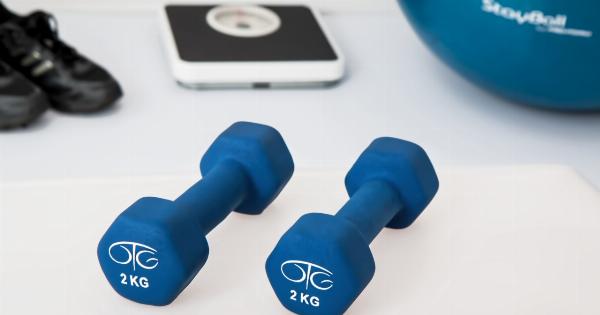In-hospital infections have become one of the major concerns of the healthcare industry over the past few decades. It not only affects the patients but also poses a risk to the staff, causing delays in treatment and increased costs.
However, with the development of new technologies, researchers have come up with new weapons to fight these infections.
1. UV-C Disinfection
UV-C lamps have been used for years to disinfect surfaces in hospitals. However, with the advancements in technology, portable UV-C disinfecting machines have emerged, which can quickly and effectively disinfect the entire room.
The machines emit UV-C rays, which kill up to 99.9% of bacteria, viruses, and other harmful microorganisms. This method is not only effective in killing bacteria but also saves time and resources, as the entire room can be disinfected within minutes.
The machines are now being used in hospitals worldwide for an added layer of protection against hospital-acquired infections.
2. Nanotechnology-based coatings
Nanotechnology is rapidly advancing, and scientists are now using it to develop coatings for hospital equipment and surfaces to prevent the spread of infections. These coatings have been shown to be effective against MRSA, E.
coli, and other dangerous pathogens that cause hospital-acquired infections.
One such nanotechnology-based coating is made up of millions of tiny spikes that puncture the cell walls of bacteria, killing them instantly.
These coatings can be applied to various surfaces and can stay active for months, reducing the need for frequent cleaning and disinfection.
3. Antimicrobial copper surfaces
Copper has been known for its antimicrobial properties for decades. Recent studies have shown that antimicrobial copper surfaces are effective in killing bacteria and viruses that cause in-hospital infections.
These surfaces have been shown to be particularly effective against MRSA and VRE.
Antimicrobial copper surfaces can be used in numerous applications in the hospital environment, including door handles, bed rails, and faucets.
These surfaces have now been implemented in various hospitals worldwide, where they have been shown to reduce the number of hospital-acquired infections and thus limit the spread of dangerous pathogens.
4. Whole-room disinfection with hydrogen peroxide vapor
Hydrogen peroxide vapor is another effective method for disinfecting hospital rooms. The process involves the use of a machine that produces a fine mist of hydrogen peroxide, which is then circulated through the room.
The hydrogen peroxide vapor kills bacteria and viruses that cause in-hospital infections.
Whole-room disinfection with hydrogen peroxide vapor is useful in treating multidrug-resistant organisms like MRSA and VRE. The whole process takes approximately an hour to complete, and once done, the room is safe to use in a matter of hours.
5. Antibiotic stewardship programs
The overuse of antibiotics in hospitals has contributed to the increase in antibiotic-resistant bacteria, which are difficult to treat and can lead to serious infections.
Antibiotic stewardship programs aim to promote the responsible use of antibiotics.
These programs involve monitoring prescriptions, optimizing the dosages, and ensuring that the right antibiotics are used for the right conditions.
They also encourage the use of alternative strategies, such as probiotics and immune-boosting substances, to prevent infections. By reducing antibiotic use, these programs can help slow the spread of antibiotic-resistant bacteria.
6. Electronic hand hygiene monitoring systems
Hand hygiene compliance is essential for preventing the spread of infections. However, studies have shown that healthcare workers often neglect this practice, which can lead to the spread of pathogens.
Electronic hand hygiene monitoring systems involve the use of sensors that detect when healthcare workers enter or leave a patient’s room and whether they have washed their hands or not.
These systems provide immediate feedback to healthcare workers and allow for easy monitoring of compliance.
The data collected can then be used to track performance and identify areas for improvement, leading to better hand hygiene practices and a reduced risk of infections.
7. The use of probiotics
Probiotics are beneficial bacteria that can be used to prevent and treat infections. They help to restore the natural bacterial balance in the body and can increase resistance to pathogens.
Probiotics have been shown to be effective in preventing diarrhea and infections in hospitalized patients.
Research has also shown that probiotics can be used to prevent antibiotic-associated infections. When antibiotics are prescribed, they kill all bacteria in the body, including the good bacteria.
This can lead to an imbalance in the body’s natural defenses, making it more vulnerable to infections. By taking probiotics alongside antibiotics, patients can restore the natural balance of bacteria in the body, reducing the risk of infections.
8. New vaccine development
Research into new vaccines against infectious diseases is ongoing. Vaccination is not only effective in preventing infections, but it also reduces the risk of antibiotic resistance.
Vaccines work by training the body’s immune system to recognize and destroy specific pathogens, thus preventing infections.
New vaccines are being developed for diseases like C. difficile and MRSA, which have become major concerns in hospitals worldwide.
These vaccines have shown promising results in clinical trials and could prove to be a valuable tool in the fight against in-hospital infections.
9. The use of robots in cleaning and disinfection
Robots have become increasingly popular in the healthcare industry for their ability to perform tasks that would otherwise be difficult or dangerous for humans. One such task is the cleaning and disinfection of hospital rooms.
Cleaning and disinfecting robots use UV-C light and other techniques to quickly and thoroughly clean hospital rooms.
These robots can cover large areas quickly and can reach areas that are difficult to clean by hand, such as behind equipment and under beds. The use of robots in cleaning and disinfection reduces the risk of infection transmission by ensuring that the rooms are thoroughly cleaned and disinfected.
10. Improved patient education
Preventing the spread of infections in hospitals cannot be achieved by healthcare workers alone. Patients and their families play a crucial role in preventing the spread of infections.
Improved patient education can help to raise awareness about the risks of hospital-acquired infections and how to prevent them.
Patients should be educated about the importance of hand hygiene, the proper use of antibiotics, and the risks of invasive procedures.
Education can also help patients to recognize the signs and symptoms of infections, so they can seek treatment promptly.
Conclusion
In-hospital infections remain a significant concern for the healthcare industry, but new weapons are emerging in the battle against these infections.
From UV-C disinfection and nanotechnology-based coatings to robotic cleaning and improved patient education, there are numerous strategies available to prevent the spread of infections in hospitals. By implementing these strategies, we can reduce the risk of infections, improve patient outcomes, and lower healthcare costs.



























